The NYC taxi drivers’ hunger strike, in photos
After taxi medallions plummeted in value, New York cabbies left with impossible loans have won debt relief from the city
Delger Erdenesanaa • February 14, 2022
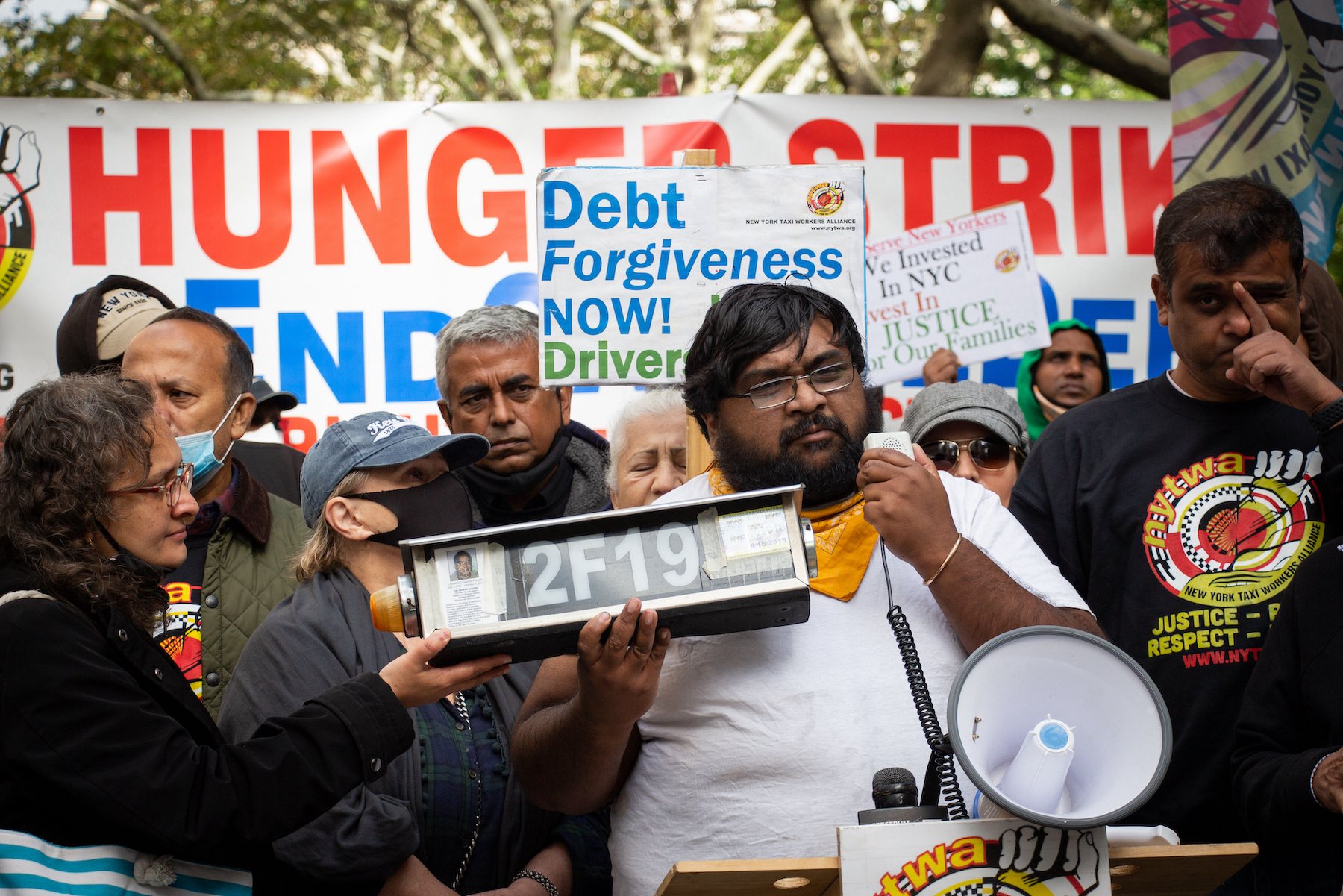
Kuber Sancho-Persad holds his late father's taxi medallion number at a protest. Many New York City taxi drivers and their families owe more money for their medallions than they are worth now. Oct. 18, 2021. [Credit: Delger Erdenesanaa]
This past September, a group of New York City taxi drivers parked their yellow cabs on the street and themselves on the sidewalk outside City Hall. For nearly two months, a rotating crew occupied the block 24/7 in a protest for debt relief.
Thousands of local cabbies — many of them immigrants from Asia who are approaching or past retirement age — have been crushed by debt in recent years. At least nine drivers have died by suicide as a result, according to the protestors. This financial distress was not caused entirely by competition from Uber and Lyft. The ride-sharing services, which entered the New York market in 2011 and 2014 respectively, only added fuel to an already smoldering fire.
To own and operate a taxi, drivers must purchase one of a limited number of city-issued medallions. For decades these medallions were worth hundreds of thousands of dollars. Although drivers had to take out loans to afford them, most thought the investment was worth it, the protestors said. Cabbies who wanted to retire could sell or lease their medallions and live off the proceeds.
But in the early 2000s, the city’s Taxi and Limousine Commission allowed private lenders to inflate the price of taxi medallions, which brought in revenue for the city government in addition to making money for banks and credit unions. Medallions reached a high of $1 million in 2014 before the bubble burst and prices crashed. Thousands of drivers were left with debt that far outweighed the new value of their medallions. In late 2021, the situation reached a breaking point.
The protestors at City Hall came to the United States from Bangladesh, China, Côte d’Ivoire, Haiti, India, Myanmar, Nepal, Pakistan, Romania, Taiwan and Tibet. Many now live in the immigrant neighborhoods of Queens, and are members of the New York Taxi Workers Alliance, a union for professional drivers. Spouses, siblings and adult children of drivers who have passed away also joined the protest.
In October, after a month of silence from the city administration, drivers and supporters escalated their tactics by going on hunger strike. Local politicians, including state assembly members Zohran Mamdani and Yuh-Line Niou, and city council candidates Shahana Hanif, Jaslin Kaur and Shekar Krishnan, joined the strike. U.S. Senator Chuck Schumer, whose father-in-law drove a taxi, also stepped in to help negotiate with former Mayor Bill de Blasio and his administration.
Then, in November, the cabbies finally won a reprieve. Marblegate Asset Management, the largest holder of taxi medallion loans, agreed to reduce loans to a maximum of $200,000, with monthly payments capped at $1,122. The city will provide $30,000 toward each loan, and guarantee the rest in case any drivers default. These are still huge amounts of money for a taxi driver to pay, but amid the industry’s years-long crisis, the deal at last offers hope.
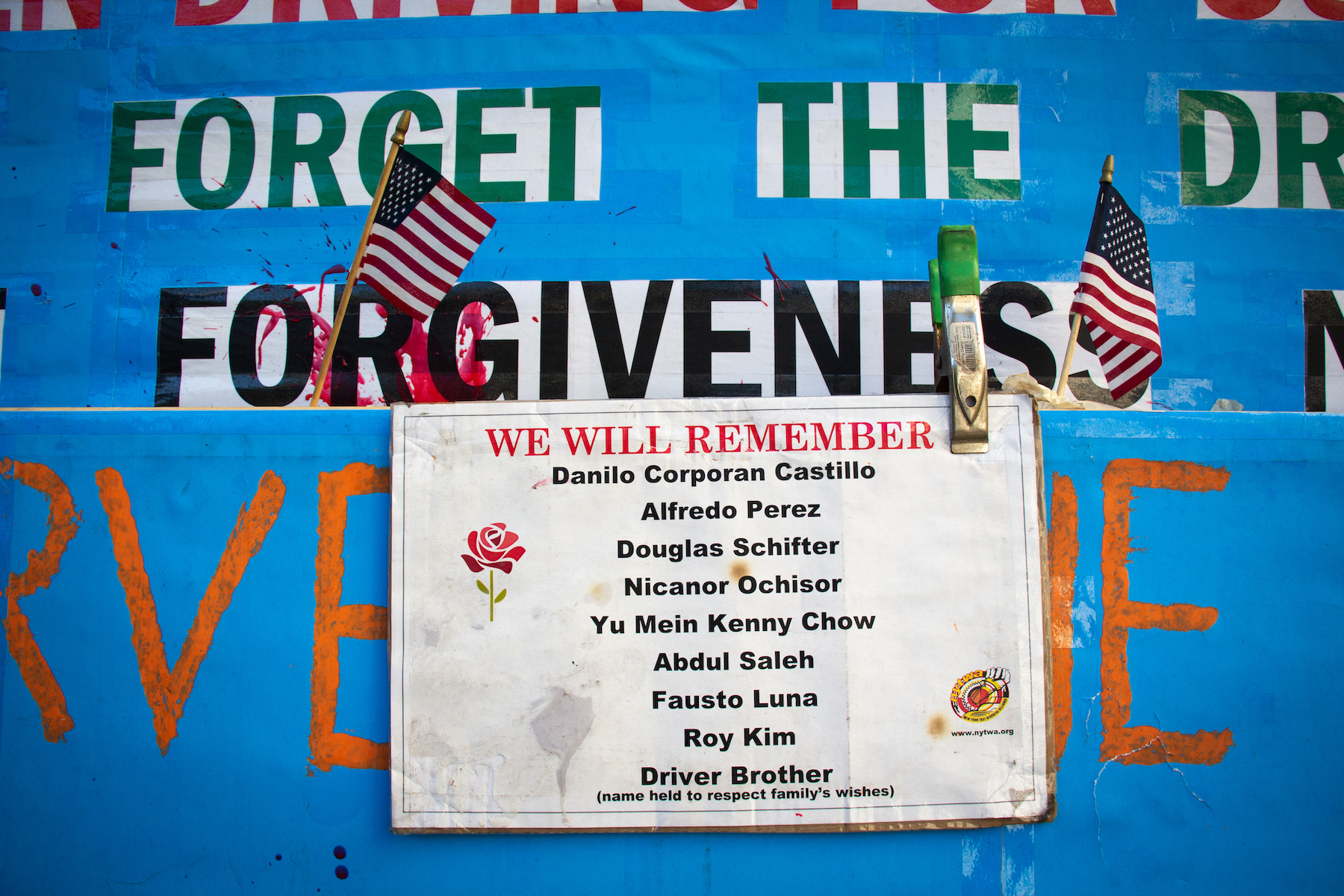
A memorial outside New York’s City Hall lists the names of taxi drivers who have died by suicide. Many drivers face crushing debt from purchasing the now devalued medallions required to own and operate taxis in the city. Oct. 18, 2021. [Credit: Delger Erdenesanaa]
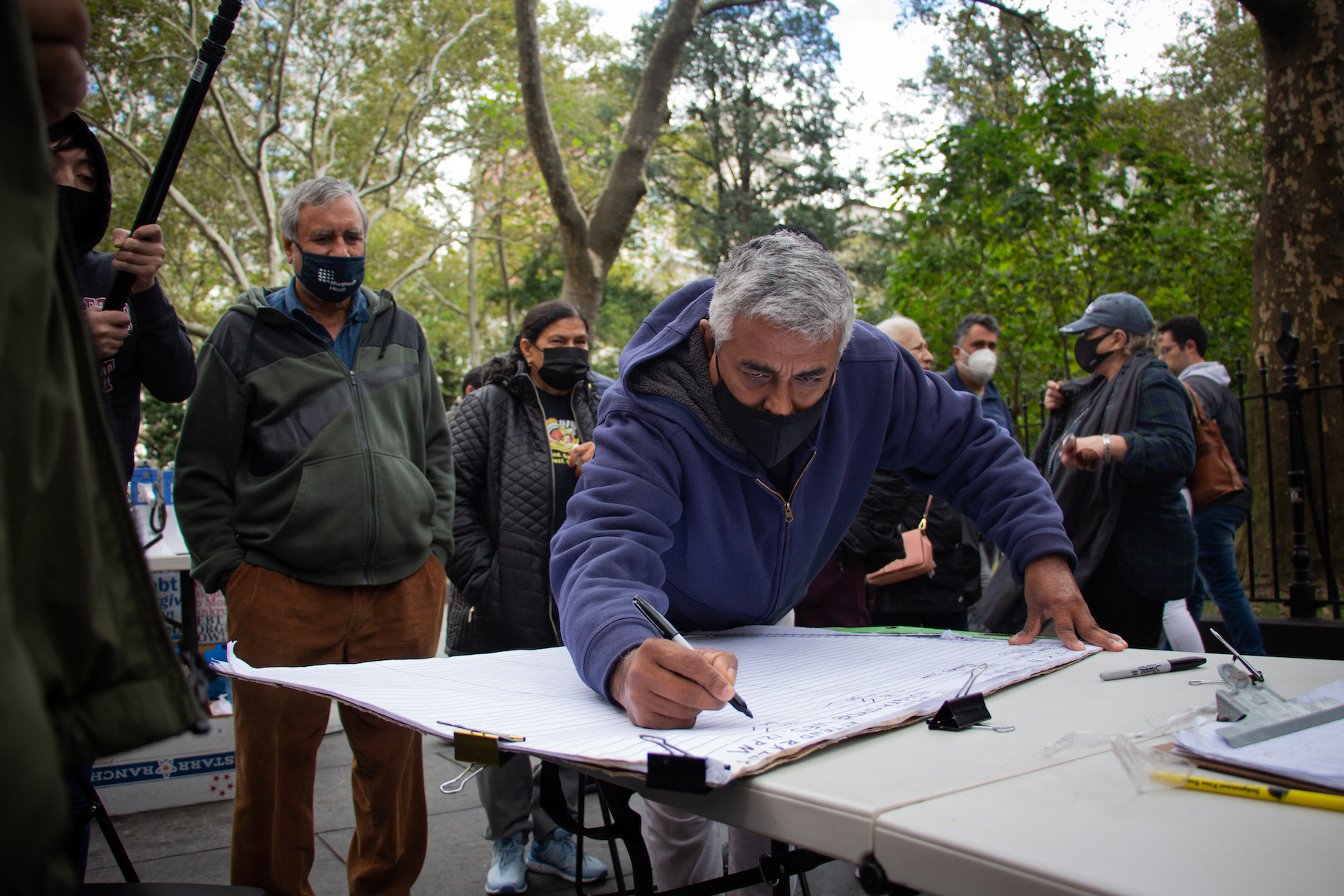
Mohammed Islam signs up to hunger strike until New York City officials agree to help taxi drivers pay off loans. In the early 2000s, local drivers borrowed hundreds of thousands of dollars each to purchase taxi medallions at the height of a now-burst financial bubble. Oct. 18, 2021. [Credit: Delger Erdenesanaa]
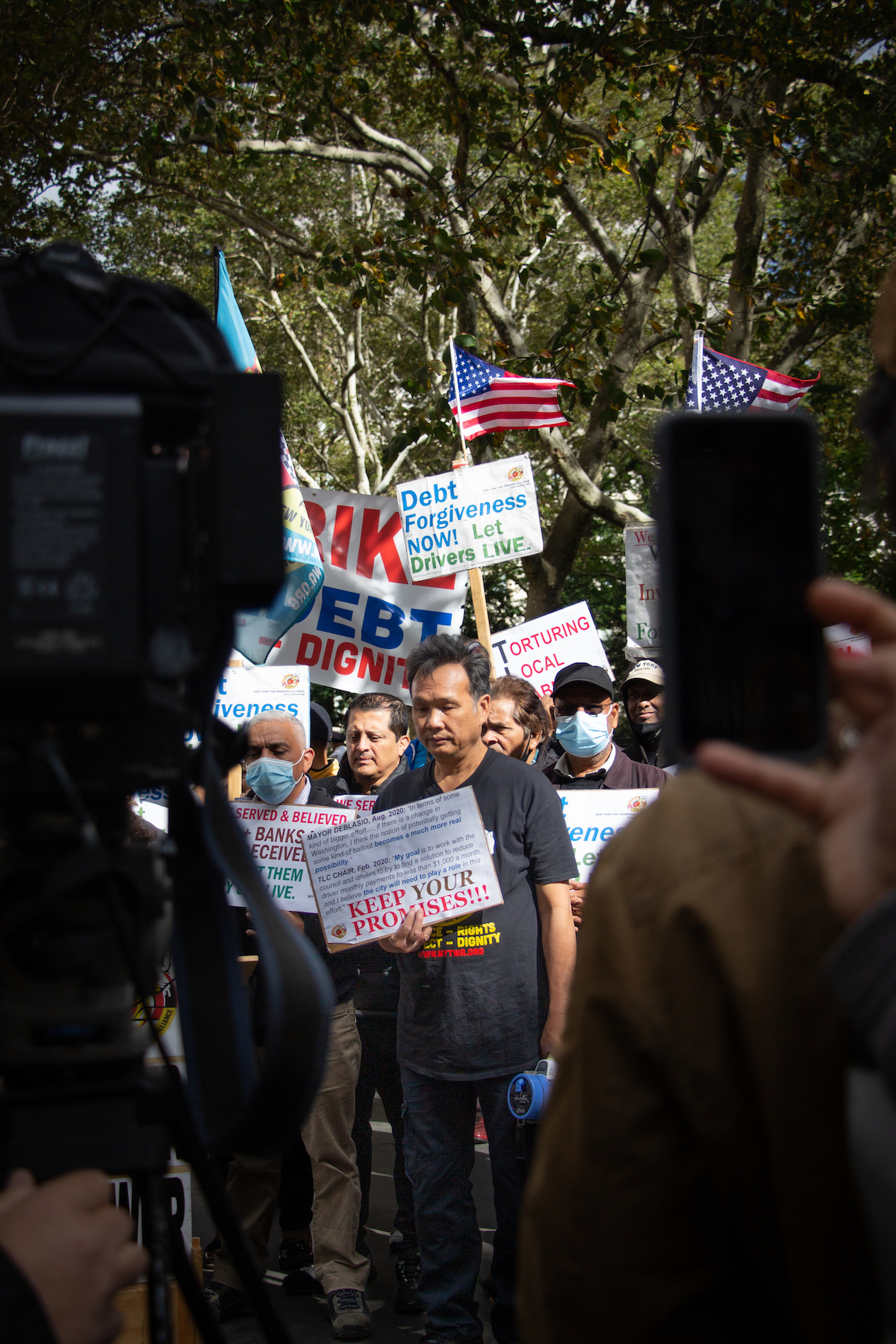
Richard Chow, who lost his brother to suicide, leads a rally of New York City taxi drivers calling for debt relief. Chow protested outside City Hall every day for nearly two months, eventually going on hunger strike. Oct. 18, 2021. [Credit: Delger Erdenesanaa]
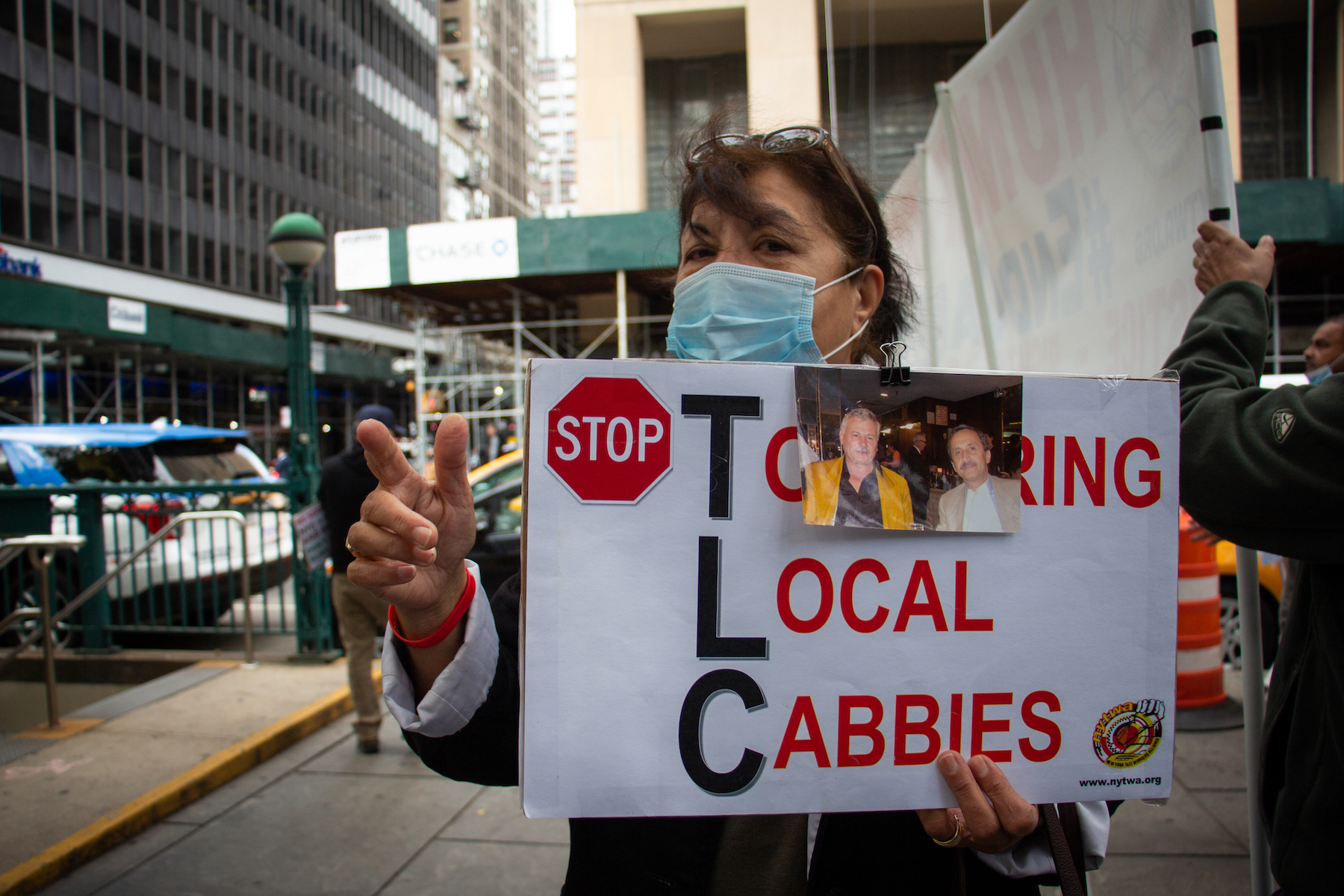
Dorina Nitescu, at a protest on the anniversary of her husband Dan’s death, holds a sign referring to the New York City Taxi and Limousine Commission. Dan was one of thousands of taxi drivers who bought medallions at inflated prices from the agency. Oct. 18, 2021. [Credit: Delger Erdenesanaa]
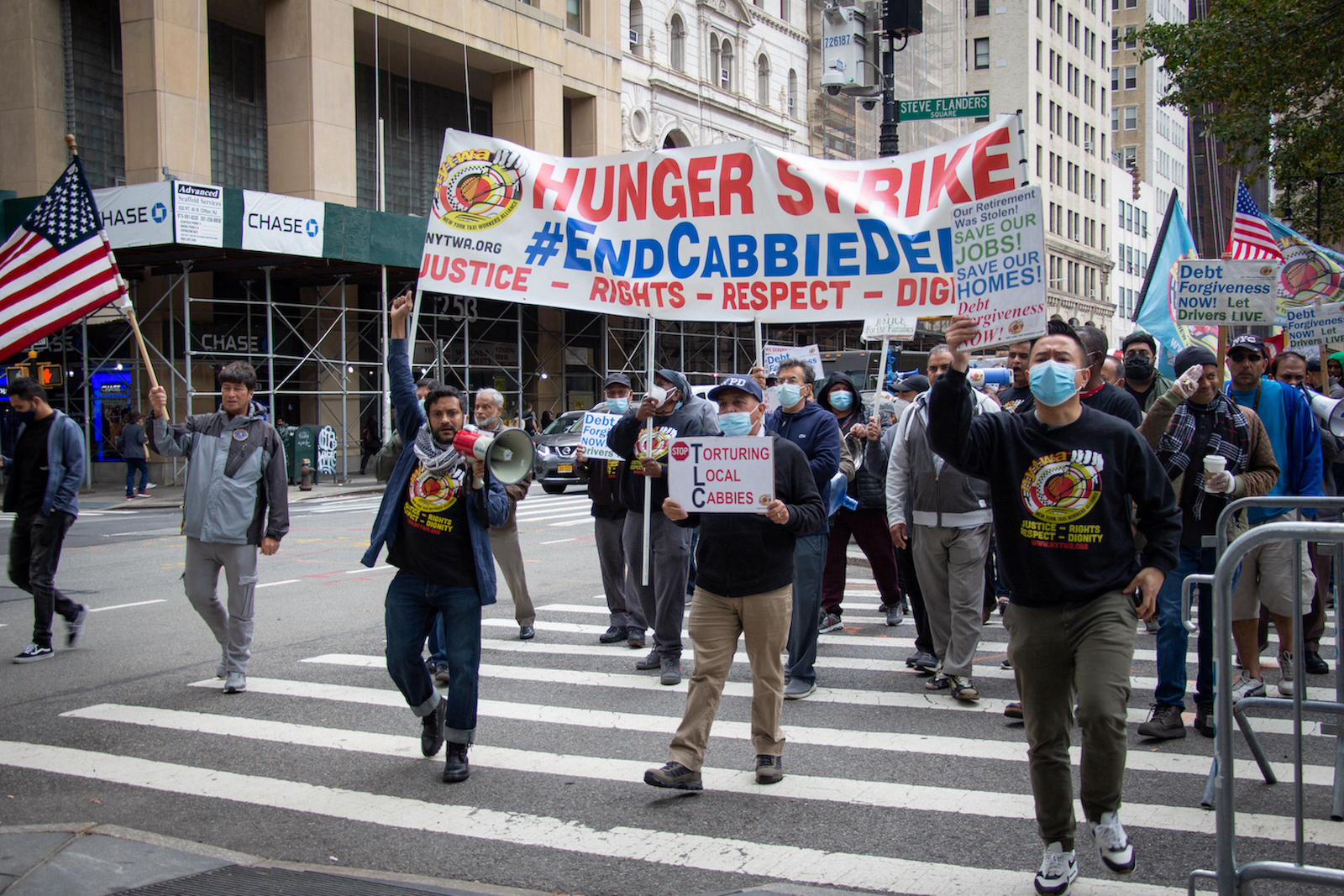
New York City taxi drivers and their supporters march around City Hall after announcing a hunger strike for medallion debt relief. Many of the protestors are members of the New York Taxi Workers Alliance, and wear shirts and carry signs with the union’s logo. Oct. 18, 2021. [Credit: Delger Erdenesanaa]
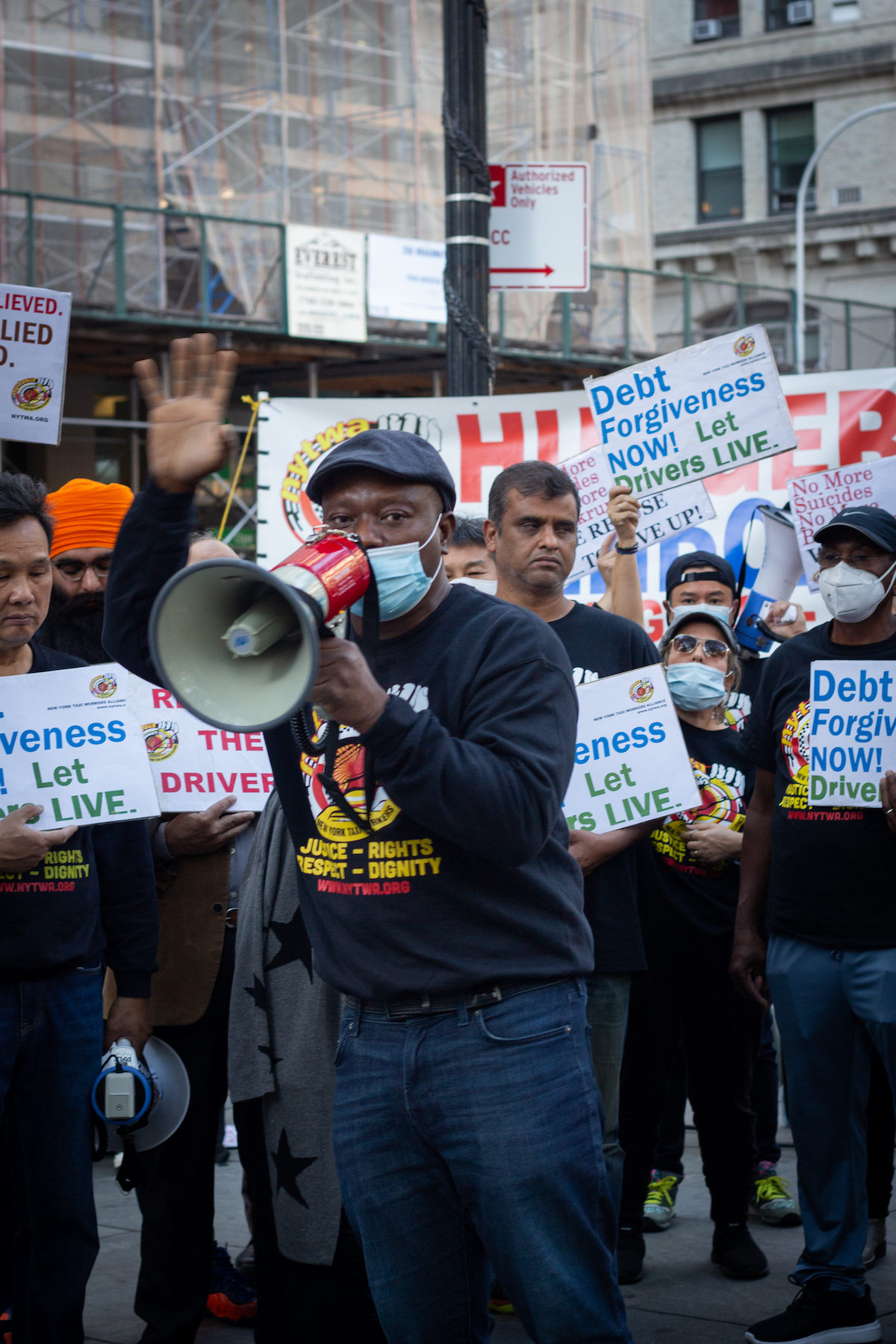
A taxi driver, whose New York City taxi medallion is now worth far less than what he owes for it, speaks during a protest for debt relief. He asks former Mayor Bill de Blasio (not present) “what should I tell my 2-year-old?” Oct. 20, 2021. [Credit: Delger Erdenesanaa]
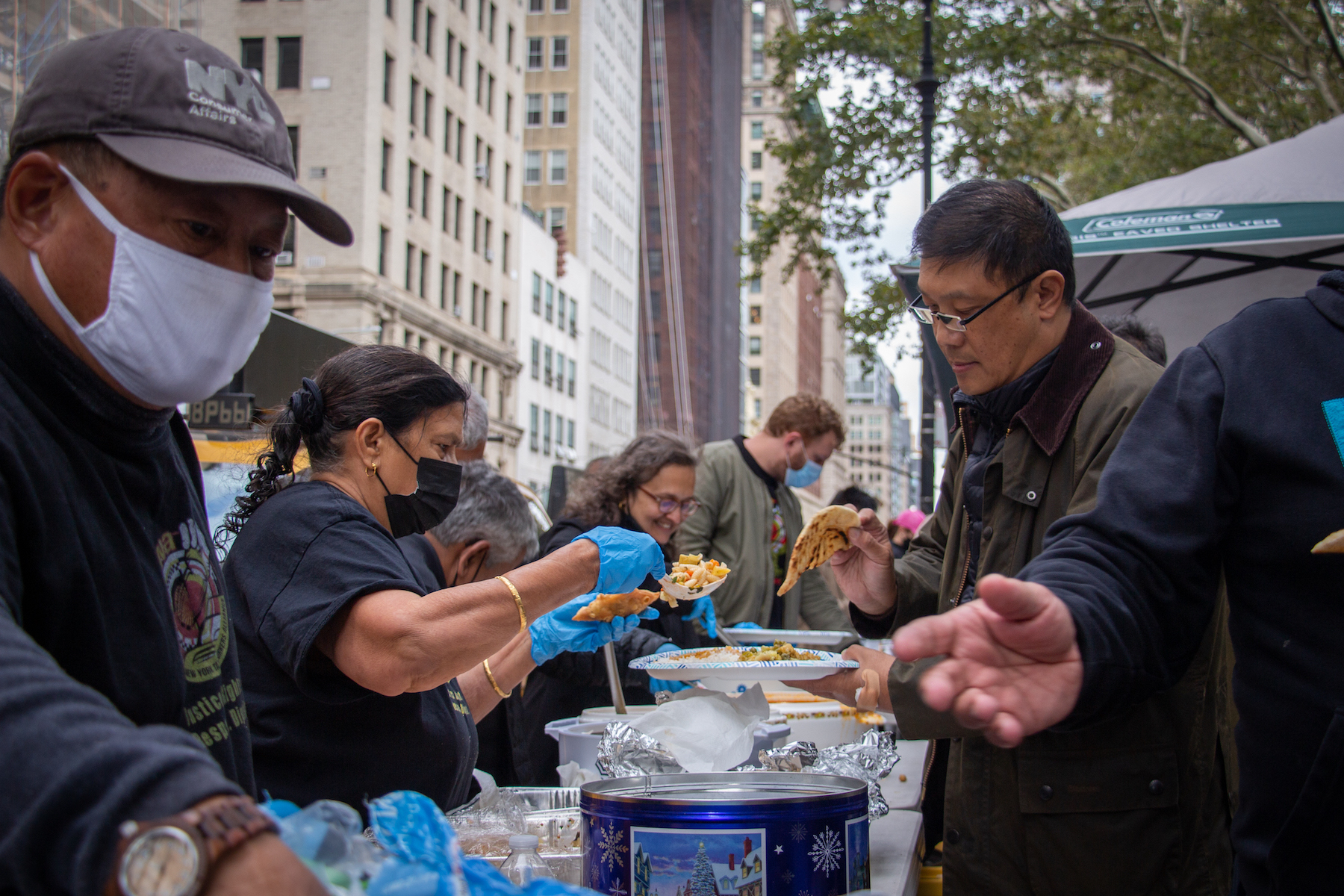
New York City taxi drivers and their supporters — mostly immigrants or the children of immigrants from Asia — share a meal of chai and South Asian food before starting a hunger strike for medallion debt relief. Oct. 18, 2021. [Credit: Delger Erdenesanaa]
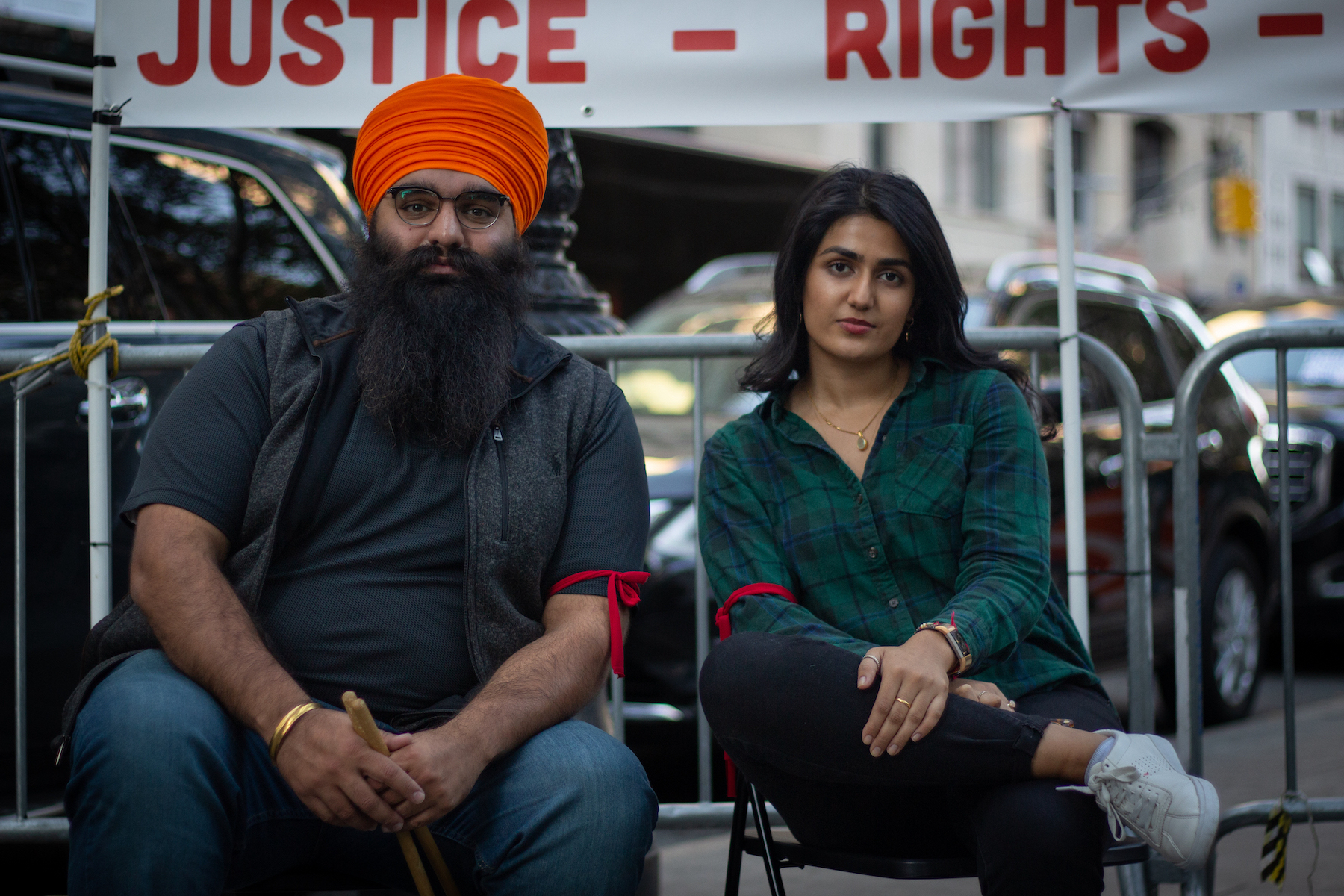
New York City taxi driver Amninder Chahal (L) and local organizer Jaslin Kaur (R), the daughter of a driver, wear armbands signifying they are hunger striking for debt relief. Oct. 20, 2021. [Credit: Delger Erdenesanaa]
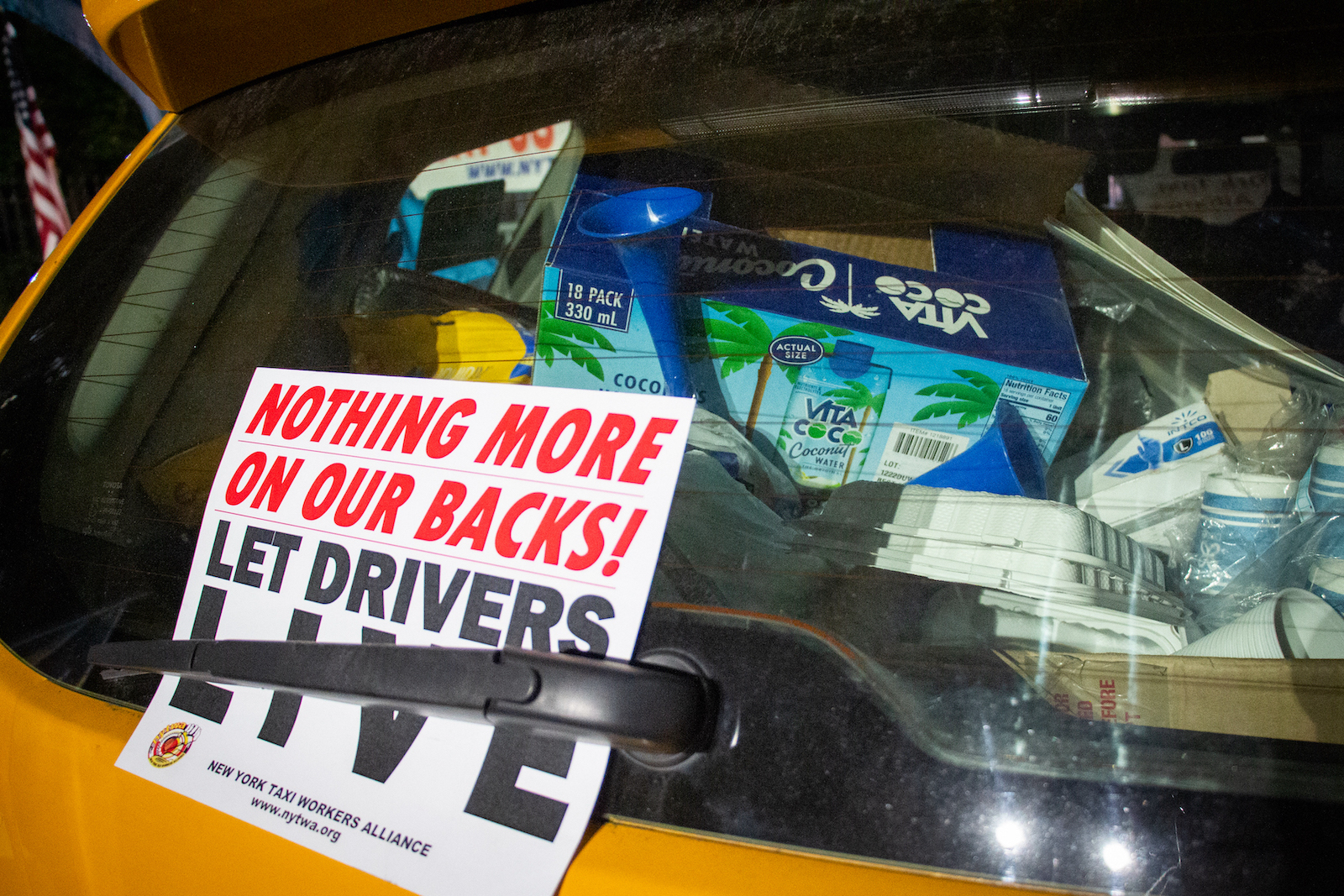
A yellow cab outside New York City Hall is packed with supplies during a 24/7 protest by taxi drivers for debt relief. Dozens come and go during the day, and a dedicated few sleep in their cars overnight at the protest site. Oct. 20, 2021. [Credit: Delger Erdenesanaa]
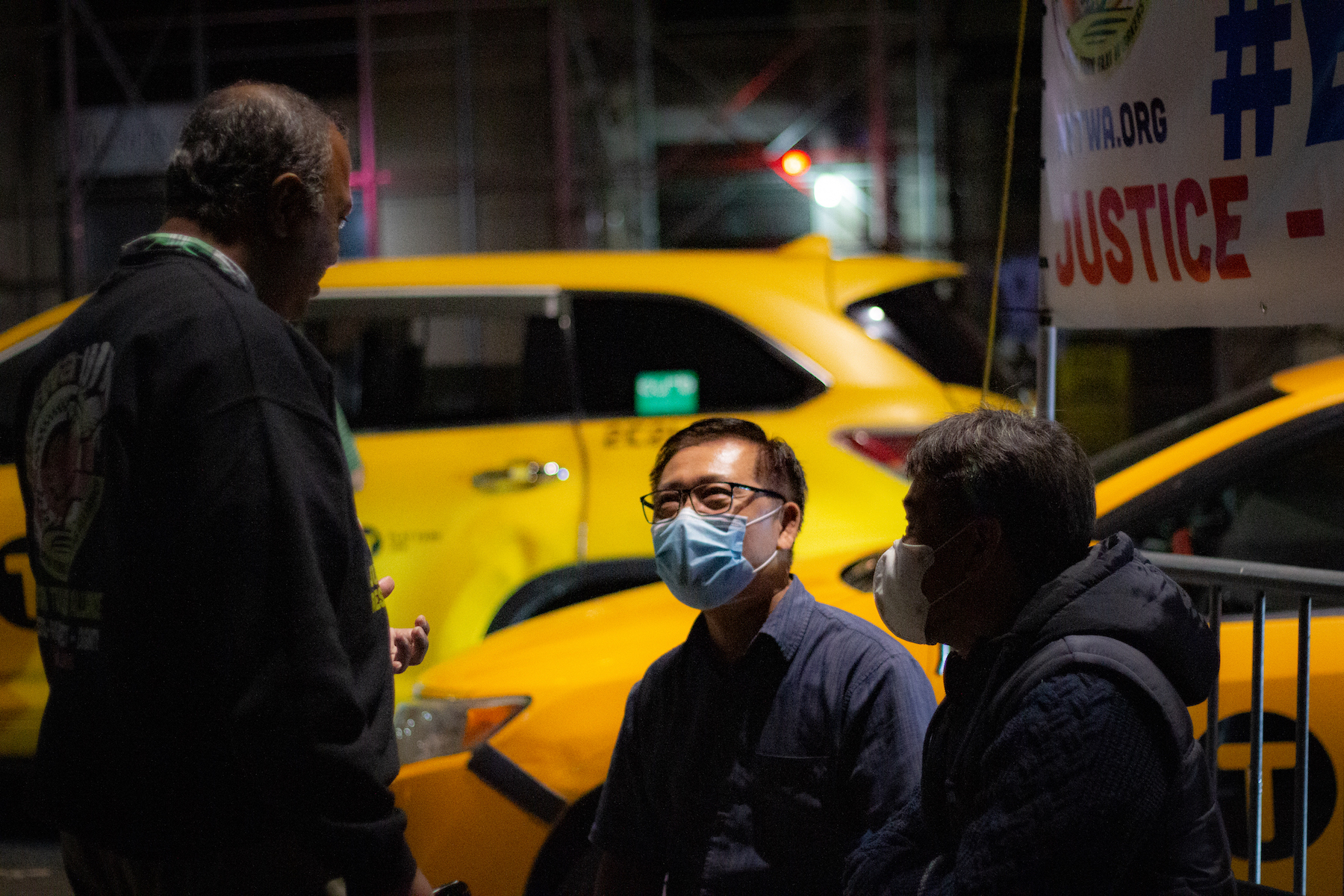
Taxi drivers, union staff from the New York Taxi Workers Alliance and friends linger into the night outside City Hall after another day of protesting for debt relief. Oct. 20, 2021. [Credit: Delger Erdenesanaa]
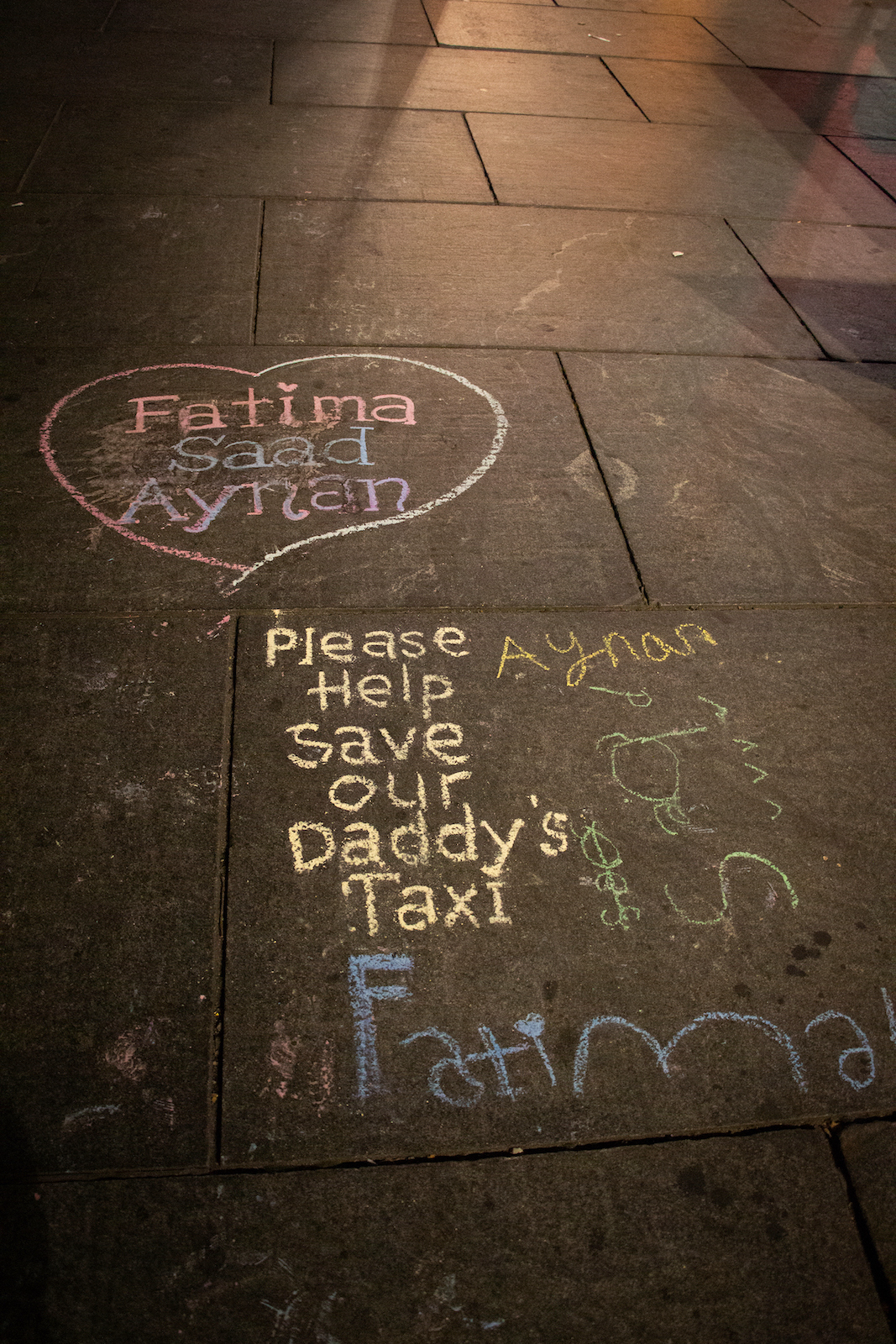
The families of New York City taxi drivers striking for debt relief stop by to write messages of support on the sidewalk outside City Hall. Oct. 20, 2021. [Credit: Delger Erdenesanaa]
1 Comment
Everyone deserves to live a good life